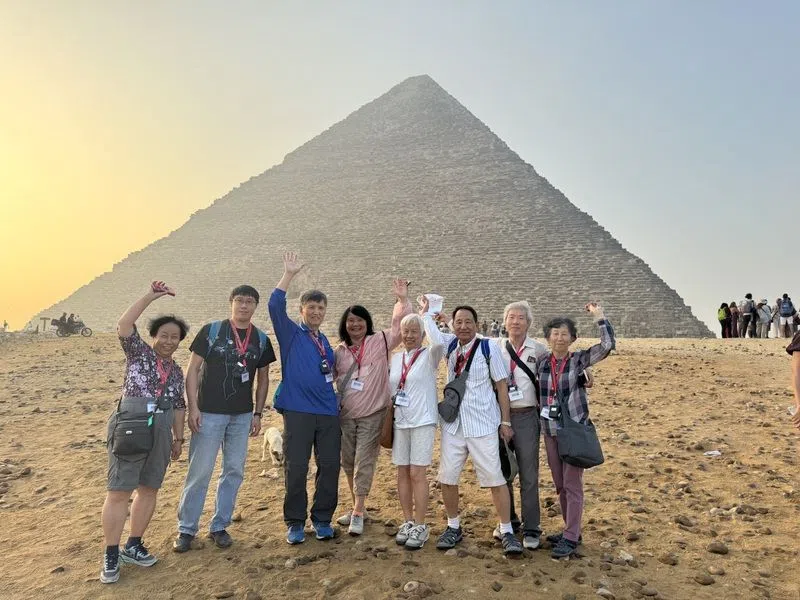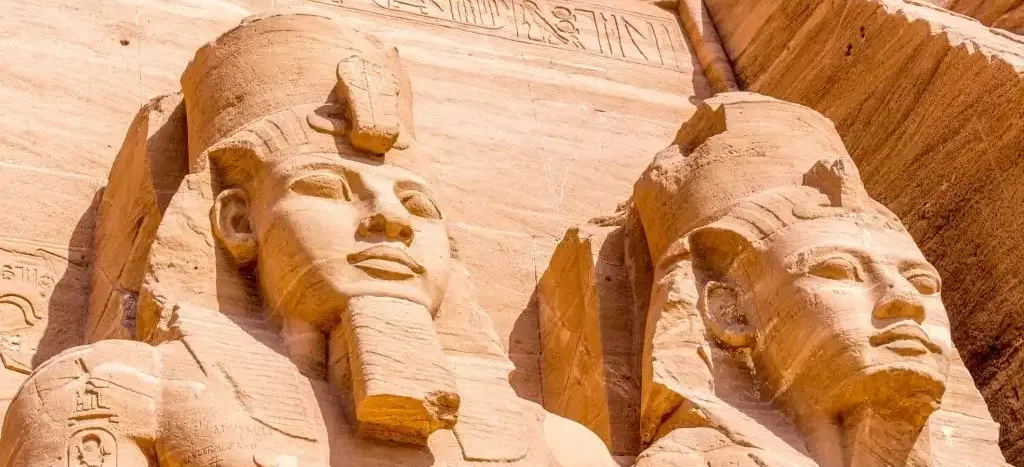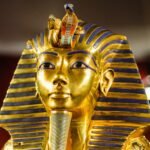Why is Tutankhamun significant?
Tutankhamun (flourished 14th century BCE) was a king of ancient Egypt (reigned c. 1333–24 BCE), known chiefly for his intact tomb, KV 62 (tomb 62), discovered in the Valley of the Kings in 1922. During his reign, powerful advisers restored the traditional Egyptian religion and art, both of which had been set aside by his predecessor Akhenaten, who had led the “Amarna revolution.” (See Amarna style.)
The parentage of Tutankhaten—as he was originally known—remains uncertain, although a single black fragment originating at Akhetaton (Tell el-Amarna), Akhenaten’s capital city, names him as a king’s son in a context similar to that of the princesses of Akhenaten. Medical analysis of Tutankhaten’s mummy shows that he shares very close physical characteristics with the mummy discovered in KV 55 (tomb 55) of the Valley of the Kings. Some scholars identify these remains as those of Smenkhkare, who seems to have been cordial with Akhenaten in the final years of his reign; others have suggested the mummy may be Akhenaten himself.
death of Smenkhkare, the young Tutankhaten became king and was married to Akhenaten’s third daughter, Ankhesenpaaton (later known as Ankhesenamen), probably the eldest surviving princess of the royal family. Because at his accession he was still very young, the elderly official Ay, who had long maintained ties with the royal family, and the general of the armies, Horemheb, served as Tutankhaten’s chief advisers.
By his third regnal year, Tutankhaten had abandoned Akhetaton and moved his residence to Memphis, the administrative capital, near modern Cairo. He changed his name to Tutankhamun and issued a decree restoring the temples, images, personnel, and privileges of the old gods. He also began the protracted process of restoring the sacred shrines of Amon, which had been severely damaged during his father’s rule. No proscription or persecution of the Aton, Akhenaten’s god, was undertaken, and royal vineyards and regiments of the army were still named after the Aton.
With the death of Smenkhkare, the young Tutankhaten became king and was married to Akhenaten’s third daughter, Ankhesenpaaton (later known as Ankhesenamen), probably the eldest surviving princess of the royal family. Because at his accession he was still very young, the elderly official Ay, who had long maintained ties with the royal family, and the general of the armies, Horemheb, served as Tutankhaten’s chief advisers.
During his third year as regent, Tutankhaten left Akhetaton and relocated to Memphis, the administrative capital located close to modern-day Cairo. After taking on the name Tutankhamun, he promulgated an edict restoring the former gods’ privileges, personnel, temples, and pictures. In addition, he started the lengthy task of repairing Amon’s holy shrines, which had sustained significant harm under his father’s leadership. Akhenaten’s god, Aton, was neither outlawed nor persecuted, and Aton continued to be honored with the namesake of infantry units and royal vineyards.
King Tutankhamun
The main monument that remains of Tutankhamun is the Colonnade of the Temple of Luxor, which he decorated with reliefs depicting the Opet festival, an annual rite of renewal involving the king, the three chief deities of Karnak (Amon, Mut, and Khons), and the local form of Amon at Luxor. The other monuments that remain are a memorial temple in western Thebes and a palace built at Karnak, both of which have largely disappeared.
In his 19th year, Tutankhamun abruptly passed away. Scientists hypothesized that malaria, along with degenerative bone disease, may have caused his death after discovering malaria parasite evidence in his mummified bones in 2010. In any case,
Ay succeeded him without naming a successor. He was interred in a little tomb in the Valley of the Kings that had been hurriedly prepared for him (his original burial place had most likely been commandeered by Ay). Similar to previous Amarna period monarchs such as Akhenaten, Smenkhkare, and Ay, he was to suffer the tragic fate of having his monuments usurped and his name removed from following king lists, mostly at the hands of his former general Horemheb, who went on to become king.
When Was the Tomb of King Tutankhamun Discovered?
While there is evidence that Tutankhamun’s tomb was briefly raided, it is evident that the location of his burial was forgotten by the 20th dynasty (c. 1190–c. 1077 BCE), when artisans working on Ramses VI’s nearby tomb erected makeshift stone shelters right over the entrance. The tomb remained intact until 1922, when English archaeologist Howard Carter conducted a thorough survey of the Valley of the Kings and discovered its site.
The king’s mummy was nestled among three coffins in his tiny tomb; the two outer ones were made of gold that had been hammered over wooden frames, while the innermost was made of solid gold. A magnificent golden portrait mask adorned the king’s head, and the mummy and its wrappings were covered in a plethora of jewelry and amulets. Four text-covered shrines made of hammered gold over wood virtually filled the burial chamber, encircling the coffins and stone sarcophagus. The remaining rooms were filled to capacity with ornaments, statues,







